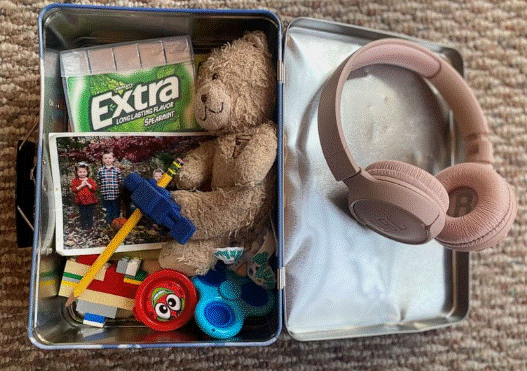
In the whirlwind of life, we often find ourselves grappling with many different obstacles. From stress and navigating difficult emotions to challenging situations at work or in relationships, these experiences can take a toll on our mental and emotional well-being. There is, however, a powerful tool to help us weather the difficult times: a coping toolbox. Much like a handyman’s kit filled with tools for various tasks, a coping toolbox is a collection of strategies and resources that empower us to cope effectively with life’s ups and downs.
Understanding the Coping Toolbox

A coping toolbox is not a one-size-fits-all solution to mental health issues. Rather, it is unique to your needs and preferences. Different situations require different coping strategies. By building and regularly replenishing your coping toolbox, you equip yourself with the resilience and adaptability needed to navigate life’s inevitable challenges.
Building Your Coping Toolbox
Self-awareness: The first step in building a coping toolbox is self-awareness. This reflective step will allow you to understand your triggers, stressors, and emotional patterns. It will help you reflect on past experiences to identify what has helped you cope effectively in the past and what did not work. This self-reflection forms the foundation upon which you’ll build your coping strategies.
Identify coping mechanisms: Next, identify various coping mechanisms that resonate with you. These are techniques that allow you to manage internal and external stressful situations. Some of these may include mindfulness and deep breathing exercises to physical activity, creative outlets, or seeking support from friends and family. The key is to choose techniques that align with your preferences and lifestyle.
Experiment and diversify: Don’t be afraid to experiment with different coping strategies to see what works best for you. Keep an open mind and be willing to step out of your comfort zone. Remember, what works for you now may not work 6 months from now. Your coping toolbox is dynamic and evolving, so continue to try new techniques and resources.
Practice consistency: Consistency is key to reaping the benefits of your coping toolbox. By incorporating your chosen coping strategies into your daily schedule, you are being proactive rather than waiting until you’re in the middle of a crisis. By continually practicing, you are also building your skills to manage a crisis effectively.
Seek professional help: While building a coping toolbox is a valuable self-care practice, it’s important to recognize when professional support may be needed. If you find yourself struggling to manage stress or difficult emotions despite your efforts, don’t hesitate to reach out to a therapist or counselor for guidance and support. Here are tips for finding a mental health provider.

Utilizing Your Coping Toolbox
Once you’ve assembled your coping toolbox, it’s time to implement it. Here are some tips for effectively using your coping strategies:
Practice mindfulness: Mindfulness helps anchor you in the here and now, reducing anxiety about the future or dwelling on the past. Cultivate present-moment awareness through mindfulness meditation or mindful activities such as walking, eating, or even showering.
Engage in self-care: Self-care activities that nourish your mind, body, and soul must be prioritized. From getting enough sleep to eating healthy meals or participating in enjoyable activities, self-care is essential for replenishing your energy reserves and maintaining balance.
Reach out for support: Seeking advice from a mentor, talking to a trusted confidant, or attending a support group are all ways to seek support. Don’t hesitate or be afraid to lean on your support network when needed.
Practice resilience: Setbacks in life are inevitable. When you embrace them and view them as challenges and opportunities for growth, your mindset can be reframed, and your outlook can change to focus on solutions rather than problems.
Know when to seek help: Recognizing when your coping strategies are insufficient and being willing to seek professional help is a critical part of your toolbox. If you are in a “funk” or cannot seem to get out of continual sadness, or if you have feelings of harming yourself, call 988, the Suicide and Crisis Lifeline. This confidential service is available 24/7.

Building and utilizing your coping toolbox can help you take a proactive approach to your mental health. Not only does it help with managing stress, difficult situations, and emotions, and activates your self-awareness to empower you to navigate life’s ups and downs with resilience and grace.
Parmele Law Firm. Guiding you with integrity, competency, and experience.

